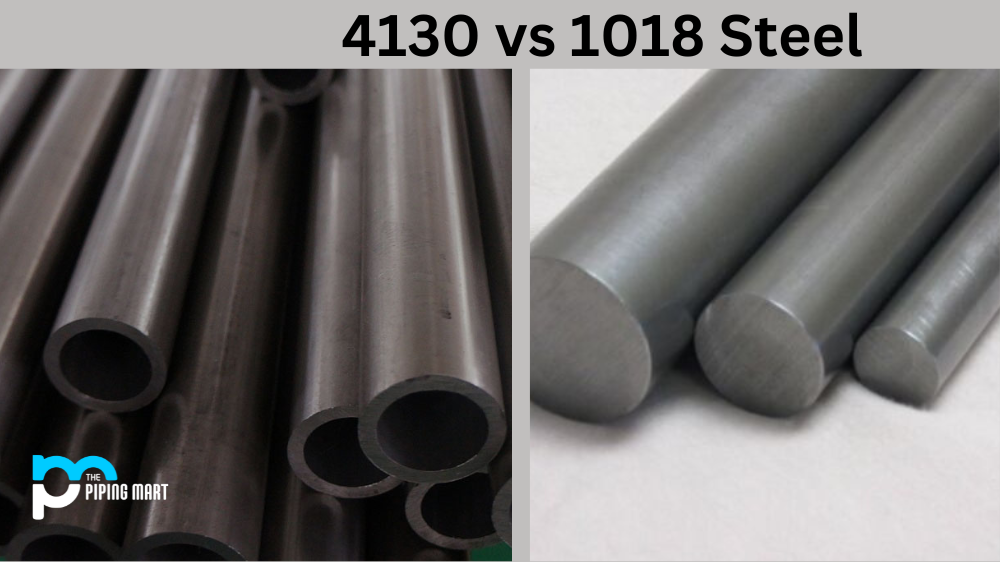There are many different types and grades to choose from regarding steel. Two popular options, often used in the manufacturing world, are 4130 and 1018. However, many individuals need help understanding the difference between the two materials and which is better to use. To help clear up any confusion, this blog will explore the features and benefits of 4130 and 1018 steel.
What is 4130 Steel?
Firstly, let’s dive into 4130 steel. This type of steel is a chromium-molybdenum alloy known for its high strength and excellent resistance to bending. It is often used to manufacture aircraft components, racing car chassis, and bicycle frames. What makes 4130 steel stand out is its ability to be heat-treated, enabling it to achieve excellent toughness and hardness. It also provides exceptional welding properties, which are perfect for fabrication. Plus, 4130 steel is relatively affordable, making it a popular choice for manufacturers on a budget.
What is 1018 Steel?
On the other hand, 1018 steel is a low-carbon steel that is easy to weld and machine. It is widely used in manufacturing hardware, fasteners, and machine parts. Unlike 4130 steel, 1018 steel cannot be heat-treated, which means it has a lower tensile strength and hardness. However, 1018 is more ductile and malleable, making it easy to shape and form. This material is also affordable and readily available, making it a go-to for many manufacturers.
Difference Between 4130 and 1018
4130 and 1018 are both steel alloys but differ in composition and properties. 4130 alloy is a chromium-molybdenum alloy that contains 0.28-0.33% carbon and 0.40-0.60% manganese, while 1018 alloy is a low-carbon steel that contains 0.14-0.20% carbon.
Composition
The main difference between 4130 and 1018 lies in their composition. 4130 alloy contains chromium and molybdenum, while 1018 alloy does not. As a result, 4130 alloy is more robust and complex than 1018 alloy.
Properties
The different composition of these alloys also results in other properties. 4130 alloy is more robust and complex than 1018 but is also more brittle. Additionally, 4130 alloy is less weldable than 1018 alloy.
Uses
4130 and 1018 alloys are used in various applications but have different ideal uses due to their other properties. 4130 alloy is typically used for aircraft parts, as it is strong yet lightweight. Meanwhile, 1018 alloy is often used for structural applications, as it is more weldable than 4130 alloys.
Cost
Another difference between these two alloys is their cost. 4130 alloy is typically more expensive than 1018 alloy because it contains chromium and molybdenum, which are relatively rare elements
Which one is better?
When deciding between 4130 and 1018 steel, it ultimately comes down to the specific project you are working on. If you require tough high-strength steel that can withstand extreme conditions, 4130 is your best bet. However, if you’re looking for a material that’s easy to machine and form, then 1018 steel is a great option. It’s essential to consider your manufacturing requirements and budget when selecting a steel type.
One thing that’s important to note is that both 4130 and 1018 steel have their own limitations. For instance, 4130 steel can’t be welded without preheating, while 1018 steel has a relatively low carbon content, which may affect its strength in certain situations. It’s crucial to consult with an expert to ensure you choose the right steel type for your specific project.
Conclusion
In conclusion, understanding the differences between 4130 and 1018 steel can help you determine which material is best suited for your project. While 4130 steel is known for its high strength and heat-treatability, 1018 steel is valued for its machinability and affordability. Ultimately, choosing the two materials depends on your manufacturing requirements and budget. So, carefully examine your needs and consult experts to make an informed decision.

Hey, I’m Krutik, a casual blogger expert in the metal industry. I am passionate about providing valuable information to my readers. With a background in engineering and construction, I like playing Cricket & watching Netflix shows in my free time. Thank you for visiting my blog, and I hope you find my information helpful!




